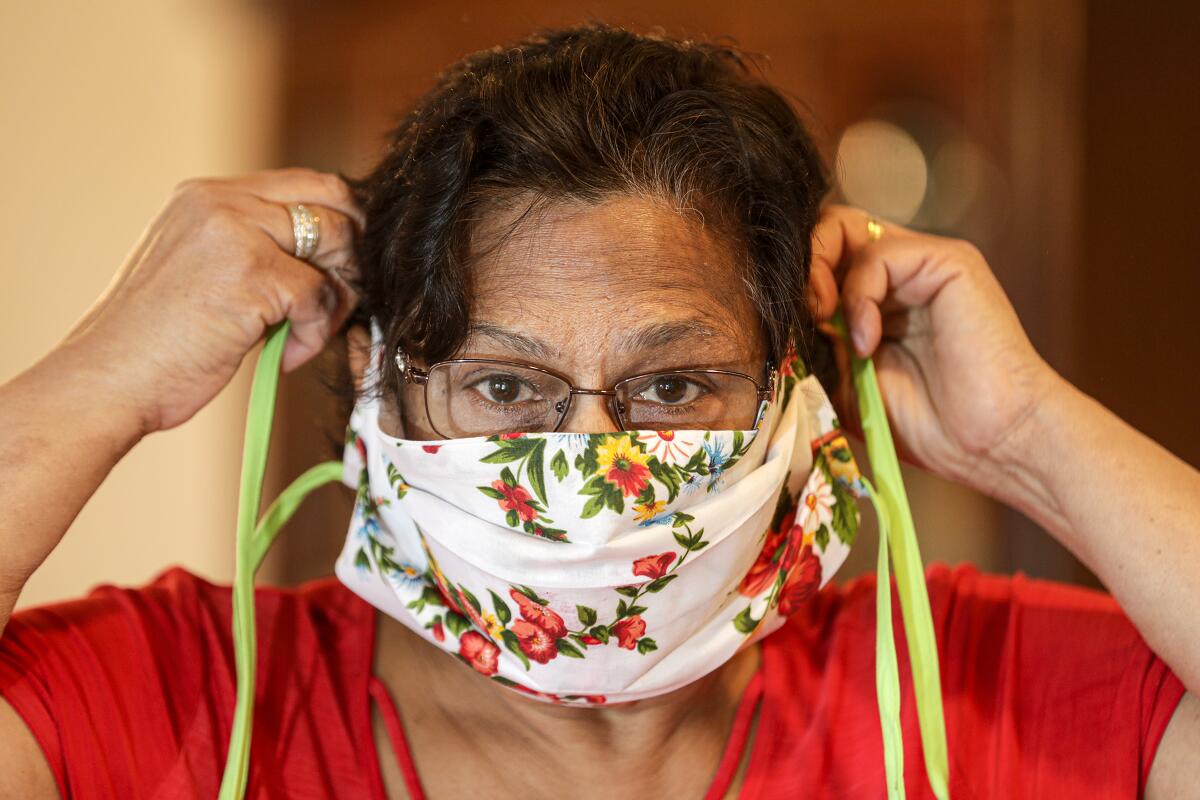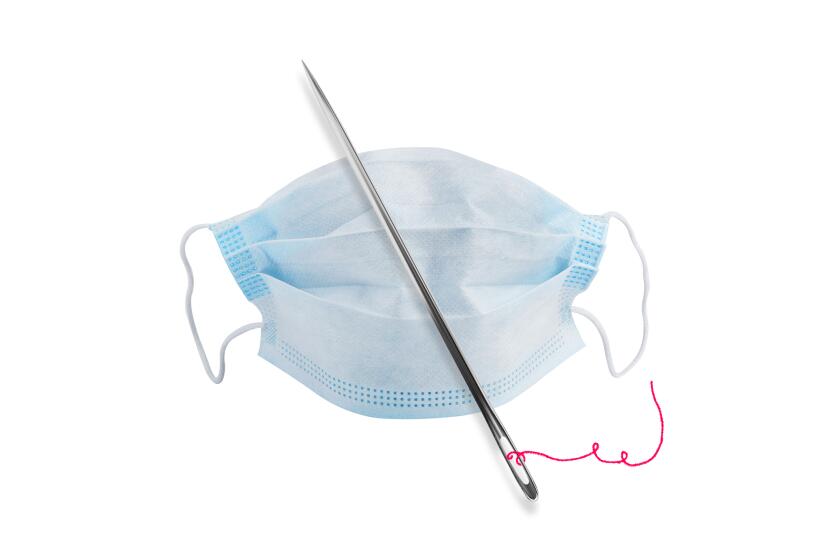CDC recommends wearing face masks during coronavirus pandemic

WASHINGTON — The Centers for Disease Control and Prevention is now advising Americans to voluntarily wear a basic cloth or fabric face mask when they go out to help curb the spread of the new coronavirus.
These non-medical masks can be either purchased online or simply made at home, the CDC says.
After insisting for weeks that healthy people did not need to wear masks in most circumstances, federal health officials decided to change their guidance in response to a growing body of evidence that people who do not appear to be sick are playing an outsized role in the COVID-19 pandemic.
“The transmission from individuals without symptoms is playing a more significant role in the spread of the virus than previously understood,” President Trump said Friday when announcing the new advice at a White House briefing. “So you don’t seem to have symptoms and it still gets transferred.”
He emphasized that rules on social distancing remain in place, and he asked members of the public not to wear medical-grade masks because those should be reserved for healthcare workers.
Trump also described the guidelines as voluntary.
“I don’t think I’m going to be doing it,” he said.
“I’m feeling good,” he added when pressed about his response. “Sitting in the Oval Office, behind that beautiful Resolute Desk, the great Resolute Desk, as I greet presidents, prime ministers, dictators, kings, queens — I don’t know, somehow I don’t see it for myself. Maybe I’ll change my mind.”
‘We may be moving gently at this point toward the Asian culture,’ one health expert says of everyday mask-wearing.
Surgeon General Jerome Adams acknowledged that government advice about masks has been “confusing to the American people.”
Until now, the CDC has said that healthy people do not need a mask unless they are working in a healthcare setting or caring for an infected person. “The best available evidence” did not suggest that wearing a mask would do much to protect a healthy person from contracting COVID-19, Adams said.
What changed that thinking was a recognition that people were spreading the virus even when they seemed healthy.
For instance, a study published Wednesday in the CDC’s Morbidity and Mortality Weekly Report documented seven clusters of COVID-19 cases in Singapore that were fueled by infected people who showed no signs of illness.
One of those clusters began with two tourists from Wuhan, China, who visited a church when they arrived in Singapore on Jan. 19 and fell ill several days later. Three other people who attended the same church that day became sick over the next four to 15 days. One of those patients sat in the same seat as one of the tourists, according to closed-circuit camera footage of the church.
Now that it’s clear asymptomatic people are spreading the virus, U.S. health officials decided everyone should wear cloth face coverings in places such as grocery stores and pharmacies, Adams said.
The masks will “help people who do have the virus and do not know it” by limiting their ability to transmit it to others, he said.
Adams also advised people to make sure their hands were clean before donning a mask: “If you choose to wear a face covering, wash your hands first.”
The move comes as a growing number of local and state agencies are offering similar guidance.
California officials said Wednesday that covering your face could prevent you from becoming infected with the new coronavirus or from spreading it to others. But they stressed that masks should not be seen as a substitute for social distancing, hand washing and other safety measures.
“Face coverings could provide some additional protection against COVID-19, but Californians should not have a false sense of security if they choose to wear them,” Dr. Mark Ghaly, California’s health and human services secretary, said in a statement. “Make sure you’re also staying six feet away from other people if you have to leave your home to get groceries or prescriptions.”
DIY coronavirus mask instructions from crafters and doctors.
Like the CDC, state officials have said people should not use medical or surgical masks, which are desperately needed by medical personnel.
Riverside County health officials released new mask guidance Tuesday, covering such essential situations as grocery shopping and medical visits.
Los Angeles Mayor Eric Garcetti said Wednesday that everyone performing essential tasks, such as food shopping, should wear homemade, non-medical face coverings, or even bandannas, as people in other countries have done.
“To be clear, you should still stay at home. This isn’t an excuse to suddenly all go out,” Garcetti said.
Experts say face masks alone are not particularly effective in preventing infection. They don’t cover the eyes, for instance, and a bit of coughed saliva that sprays into the eye can cause an infection.
Wearing a mask but still touching your face with unwashed, virus-contaminated hands can also lead to infection. People often find masks uncomfortable and touch them to make adjustments.
But even if they don’t provide full protection to the wearer, they can protect others nearby.
Dr. Otto Yang, an infectious diseases expert at UCLA, said he thinks universal mask-wearing has helped keep the virus under control in places like Singapore and Taiwan.
“My personal opinion is that that’s probably been an important thing in other countries flattening their curve,” he said. “If you go to Taiwan or Singapore, everyone’s got a mask on all the time. Healthy or not. Sick or not.”
The California Department of Public Health has these guidelines for cloth masks:
- Face coverings can be made out of cloth, be factory-made or hand-sewn, or improvised using bandannas, scarves, T-shirts, sweatshirts or towels.
- The material should cover both the nose and mouth.
- Ideally, face coverings should be washed after each use. Dirty masks should be placed in a dedicated laundry bag or bin.
- Use detergent and hot water when washing cloth masks, and dry them on a hot cycle.
- Be sure your mask is comfortable; you don’t want to have to keep adjusting the mask because that means touching your face.
- Wash your hands, or use hand sanitizer, before and after touching your face or face coverings.
- If you must re-wear your cloth face covering before washing it, wash your hands immediately after putting it back on and avoid touching your face.
Megerian reported from Washington, Lin from Millbrae, Calif., and Money and Brown from Los Angeles.











